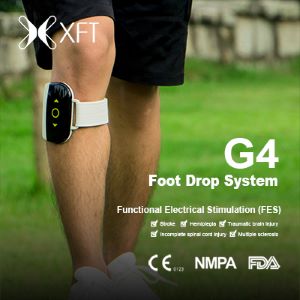Pediatric Rehabilitation
Investigation of the Relationship Between Sensory Processing Patterns and Movement Quality of Upper Extremity Functions in Children with Hemiparetic Cerebral Palsy: A Randomized Controlled Study
Wednesday, November 1, 2023
3:25 PM - 3:31 PM
Location: Station 3
- EG
- MH
Meral Huri
Associate Professor
Hacettepe University, Faculty of Health Sciences, Department of Occupational Therapy, United States
Presenting Author(s)
Research Objectives: To investigate the relationship between the movement quality of upper extremity functions and sensory processing processes in children with hemiparetic cerebral palsy and to compare it with typical developing children.
Design: This study is a randomized controlled trial. The relationship between the two variables was examined and compared with typically developing children.
Setting: This study was carried out in the Pediatric Occupational Therapy Clinic at Hacettepe University, Faculty of Health Sciences, Department of Occupational Therapy.
Participants: A total of 30 childrenbetween the ages of 3-8, 15 diagnosed with hemiparetic cerebral palsy and 15 typical development were included in our study.
Interventions: no intervention
Main Outcome Measures: To ensure homogeneity, the Gross Motor Function Classification System (GMFCS) and the Manuel Abilitiy Classification System (MACS) were used beforeparticipating in the study. Upper Extremity Skills Quality Test (QUEST) was used to evaluate upper limb functions. Sensory Profile wasused to evaluate sensory processes.
Results: In children diagnosed with hemiparetic cerebral palsy, including upper extremity functions; Dissociated Movements, Grasp, Weight Bearing and Protective Extension areas was observed that there was a significant relationship between modulation processes such as Touch, Vision, Vestibular, Endurance and Tonus-related Process, Movement and Body Position-related Process, andalso Emotional and Social Responses and Behavioral Results of Sensory Processing (p < 0.05). Compared to children with typical development; were found significant relationshipsand differences between Dissociated Movements, Weight Bearing, Visual Processing, Touch Processing, Emotional Responses and Editing Visual Effects Affecting Activity and Emotional and Social Responses (p < 0.05).
Conclusions: It has beenobserved that there is a significant difference and relationship in terms of Visual Processing, Regulation of Visual Inputs Affecting Emotional Responses and Activity, and Emotional and Social Responses. For this reason, we recommend that children with hemiparetic cerebral palsy should evaluate their sensory processes as well as their motor skills before the intervention process. There is a need for further studies in which the number of people in the sample group is expanded and other subtypes of cerebral palsy are also addressed.
Author(s) Disclosures: There is no conflict.
Design: This study is a randomized controlled trial. The relationship between the two variables was examined and compared with typically developing children.
Setting: This study was carried out in the Pediatric Occupational Therapy Clinic at Hacettepe University, Faculty of Health Sciences, Department of Occupational Therapy.
Participants: A total of 30 childrenbetween the ages of 3-8, 15 diagnosed with hemiparetic cerebral palsy and 15 typical development were included in our study.
Interventions: no intervention
Main Outcome Measures: To ensure homogeneity, the Gross Motor Function Classification System (GMFCS) and the Manuel Abilitiy Classification System (MACS) were used beforeparticipating in the study. Upper Extremity Skills Quality Test (QUEST) was used to evaluate upper limb functions. Sensory Profile wasused to evaluate sensory processes.
Results: In children diagnosed with hemiparetic cerebral palsy, including upper extremity functions; Dissociated Movements, Grasp, Weight Bearing and Protective Extension areas was observed that there was a significant relationship between modulation processes such as Touch, Vision, Vestibular, Endurance and Tonus-related Process, Movement and Body Position-related Process, andalso Emotional and Social Responses and Behavioral Results of Sensory Processing (p < 0.05). Compared to children with typical development; were found significant relationshipsand differences between Dissociated Movements, Weight Bearing, Visual Processing, Touch Processing, Emotional Responses and Editing Visual Effects Affecting Activity and Emotional and Social Responses (p < 0.05).
Conclusions: It has beenobserved that there is a significant difference and relationship in terms of Visual Processing, Regulation of Visual Inputs Affecting Emotional Responses and Activity, and Emotional and Social Responses. For this reason, we recommend that children with hemiparetic cerebral palsy should evaluate their sensory processes as well as their motor skills before the intervention process. There is a need for further studies in which the number of people in the sample group is expanded and other subtypes of cerebral palsy are also addressed.
Author(s) Disclosures: There is no conflict.
Learning Objectives:
- As a result of this study, the participant will have information about the differences between the sensory processing skills of children with cerebral palsy and those with normal development.
- As a result of this study, the participant will have information about the sensory profiles of children with cerebral palsy. Learns what kind of sensory processing difficulties they have.
- As a result of this study, the participant will have an idea about the sensory processing problems that affect the upper extremity movement quality.
- The participantadds sensory processing skills to the factors that he will consider inhis interventions for cerebral palsy.He learns that it is one of the main factors for the intervention process.

.jpg)
